 BUY IT AT AMAZON: CLICK HERE!
BUY IT AT AMAZON: CLICK HERE!
STUDIO: Warner Home Video
MSRP: $39.98
RATED: NR
RUNNING TIME: 1176 Minutes
SPECIAL FEATURES:
• Commentary on “Sue Ellen’s Choice” and “A House Divided” by Patrick Duffy and Linda Gray
• Who Shot J.R.?: The Dallas Phenomenon documentary
In the 1970s and ‘80s, Dallas and Dynasty popularized the concept of a primetime soap opera. They borrowed the general concept of several overarching plotlines at once and dramatic cliffhangers, then jazzed them up with higher production values and better acting. It was a winning combination that resulted in Dallas becoming one of television’s highest rated programs during its heyday.
The WB’s release of Dallas’ third season (which is technically its second season) contains the series’ most famous plotline, the infamous “Who Shot JR?” story, and presents Dallas at its pinnacle in terms of popularity and storytelling.
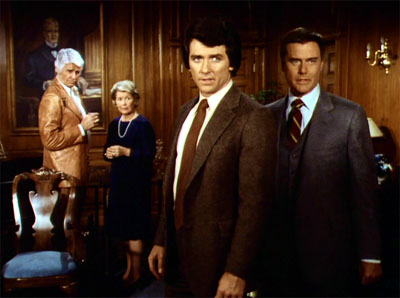
Trademark of Dallas #1: Characters constantly drinking.
The Show
While the JR shooting plotline overshadows the rest of the stories in this season, this DVD set is Dallas at its prime. The show had just started to become a ratings blockbuster at this point and the writers did everything in their power to keep it that way. Things start off quickly in the first storyline, a two-parter called “Whatever Happened to Baby John?” in which the evil J.R. Ewing’s son is kidnapped.
The series never stops long enough to lose its momentum after the opening story. As soon as his son is returned, J.R. wastes no time in getting himself involved in an extramarital affair and involving himself in shady business deals. A second baby-related story dominates the first half of the season, in which Pam Ewing becomes pregnant but must deal with the heartbreak of a miscarriage due to a horse riding accident.
The series got a few award nominations for its two part “Mastectomy” plotline, in which Miss Ellie finds a cancerous lump on her breast. Her discovery of this fact coincides with her husband, Jock Ewing, revealing that he had a previous wife whom he divorced after she became ill. Miss Ellie must deal with the fear of her condition and the possible loss of a breast, as well as wondering if Jock will leave her as well since she is sick. The late Barbara Bel Geddes delivers a wonderful performance during this story arc that got her nominated for an Emmy.
The middle portion of the series doesn’t contain as many bombshell revelations as the beginning, but introduces several new plotlines that serve to make its finale even more important. J.R. continues to manipulate behind the scenes and screw over as many people as it takes to get what he wants. He continues his affair with his wife’s younger sister, and tries to get his niece married and shipped out of town. His machinations result in his wife asking for a divorce, which J.R. is happy to grant on the condition that he retains custody of his child.
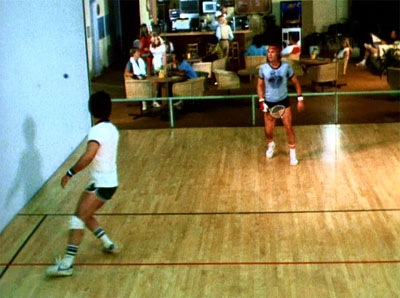
Trademark of Dallas #2: Hilarious ’70s fashions and activities.
The season was originally supposed to end with the “Jock’s Trial” storyline, in which a dead body is discovered on the Ewing’s property and Jock Ewing is charged with murder. Due to the series’ high ratings, more episodes were ordered. Looking for a way to one-up the original cliffhanger of the murder accusation, the writers delivered the infamous “Who Shot JR” episode. Throughout the episode, practically every major and minor character gets a set-up and motive for murdering J.R. The episode ends with J.R. being shot twice in the gut in the darkness of his office without seeing his attacker.
One of the nice things about soap opera style dramas is the concern shown for continuity. The characters feel more real once you realize that eventually all their actions will result in consequences for someone. In the case of J.R., it results in his being shot. Of course, that didn’t prevent him from being a bastard in the show’s following eleven seasons and two TV movies.
At this point in its history, Dallas was still taking itself a bit more seriously than a typical soap opera. The show treats events such as baby kidnappings and paternity suits as high drama affairs, which adds to its charm when viewing it decades after its filming. The characters themselves are mostly two-dimensional. Bobby Ewing is simply a good, moral person and that’s that. J.R. is the evil brother who does everything with a smile. The only characters presented with a chance to show real depth in this season are Sue Ellen Ewing and Miss Ellie. The show’s strong female characters are one thing that sets it apart from Dynasty’s constant cat fights and slap fests between females.
While the show isn’t so compelling that you find yourself unable to resist watching several episodes in a row, it will still get its hooks into you deep enough that you’ll finish the season in a matter of days. This season is Dallas at its strongest and without any viewer alienating stories (Hello “The entire season was a dream” storyline!) to drive you away. It’s recommended viewing for fans of the show and anyone interested in what made Dallas such a television phenomenon.
7.5 out of 10

Trademark of Dallas #3: Characters constantly drinking while engaging in hilarious ’70s activities.
The Look
The transfer on Dallas is decent considering it was aired almost twenty-five years ago. Even if the clothes and locations in the series didn’t date it, the grainy picture would. The grain is bad in several exterior shots, but otherwise it isn’t a distraction. Before each episode begins, several scenes from throughout the episode are shown to entice the viewer. The same attention does not seem to have been given to these clips as was given to the episode itself, and the transfers on these intro scenes are often darker and more washed out than the rest of the show. It’s not a reference quality transfer by any means, but it’s still better than watching reruns on soap opera channels.
6.0 out of 10
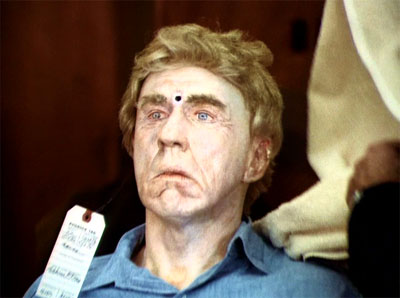
Unfortunately, the "Who Put The Horrible Wig On This Dummy?" plotline failed to capture viewers.
The Noise
Dallas is presented in Dolby Digital mono sound. The show doesn’t really place any emphasis on background music and practically all the sounds in any episode are merely dialogue. Considering its content and the fact that it’s a decades old television show, a mono track is sufficient. I can’t help but wonder how awesome it would have been to get a stereo mix of the cheesy 70’s guitar riffs of the Dallas theme song tough.
6.0 out of 10

In one of the show’s more interesting plotlines, all of J.R.’s bones turned to jelly and he had to be fed by others.
The Goodies
The first Dallas DVD included episodes with commentary by Larry Hagman, Charlene Tilton and show creator David Jacobs. This DVD has two episodes with commentary by Patrick Duffy and Linda Gray. All five of the above persons appear on this DVD’ s documentary, which leads me to believe that they are the only ones willing to participate in the extras or the only ones asked to. I like that WB is keeping the commentaries fresh by changing up the participants, but it’s an idea better in theory than in practice. David Jacobs was the driving creative force behind the show and Hagman played J.R., the central character on the show. These two should be present on all the commentaries if possible.
Duffy and Gray have a lot of fun on the tracks, but offer no real information. They’re basically two friends who had a lot of fun working on the show and the commentary reflects that. A lot of time has passed since these episodes were filmed and both seem to have forgotten the season’s plotlines. I’m sure after filming 300+ episodes of any show the stories start to blur together though. If you ever wanted to know the type of fabric Sue Ellen’s outfits were made out of, this commentary track is for you.
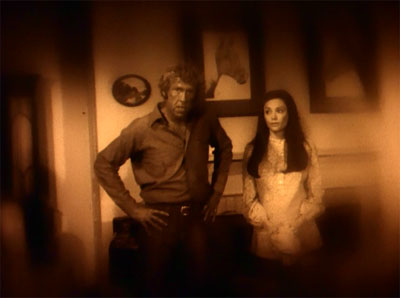
Count Chocula eyes his next victims.
The set contains a short feature on the “Who Shot J.R.?” controversy. It’s basically thirty minutes of cast members talking about how great it was but never going into any real detail. Jacobs talks about filming every cast member shooting J.R. just to throw people off and keep the real shooter a secret.
The cast members talk about the living hell of being asked “Who shot J.R.?” by every person on the planet for six months. They also discuss the actors strike after the season finale, resulting in a wait of six months instead of the usual three for the next season’s premiere. Hagman goes into some detail about his power play for more money and Jacobs talks about possibly having to kill J.R. off if they couldn’t renegotiate Hagman’s contract. With everyone talking about what a big deal it was and how it was all over local newscasts, it would have been nice to see some real archival footage from the era instead of people just describing it. All the extras on this set had the potential to be much more interesting, but turned out to be fluffy nostalgia trips with no meat to them.
3.0 out of 10
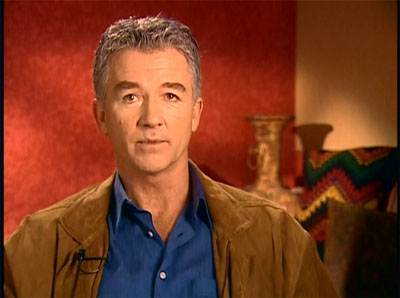
Patrick Duffy or a wax dummy? You be the judge!
The Artwork
The artwork features J.R. Ewing and his wife Sue Ellen standing in front of a backdrop of Dallas. The character selection makes sense as these two characters are big players in season three. The box folds out to show a large picture of the ensemble cast. This set uses double sided discs, so no disc artwork is present. There are enough character combinations that WB will never be at a loss when it comes to the cover artwork, as uninspired as it may be.
6.0 out of 10